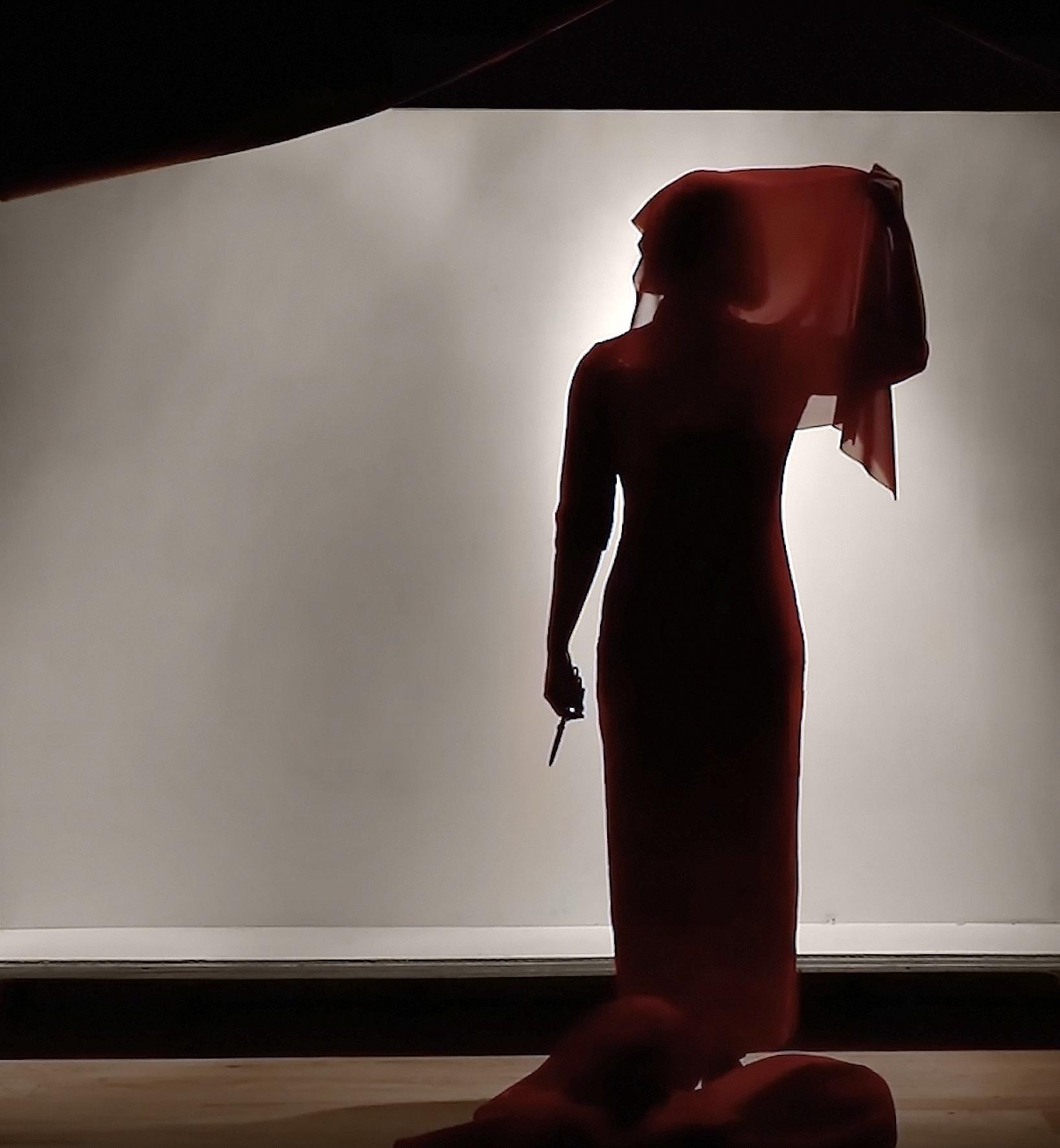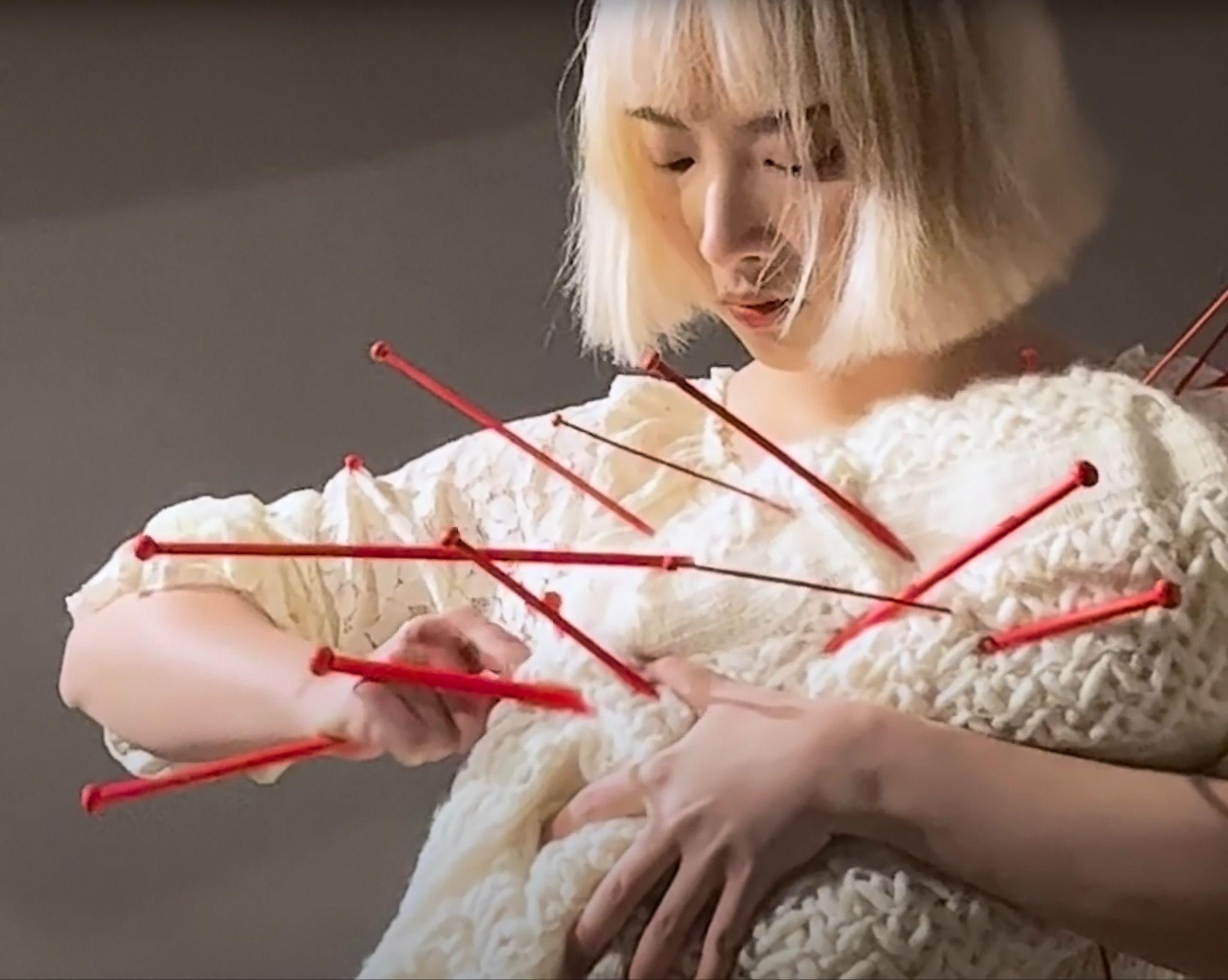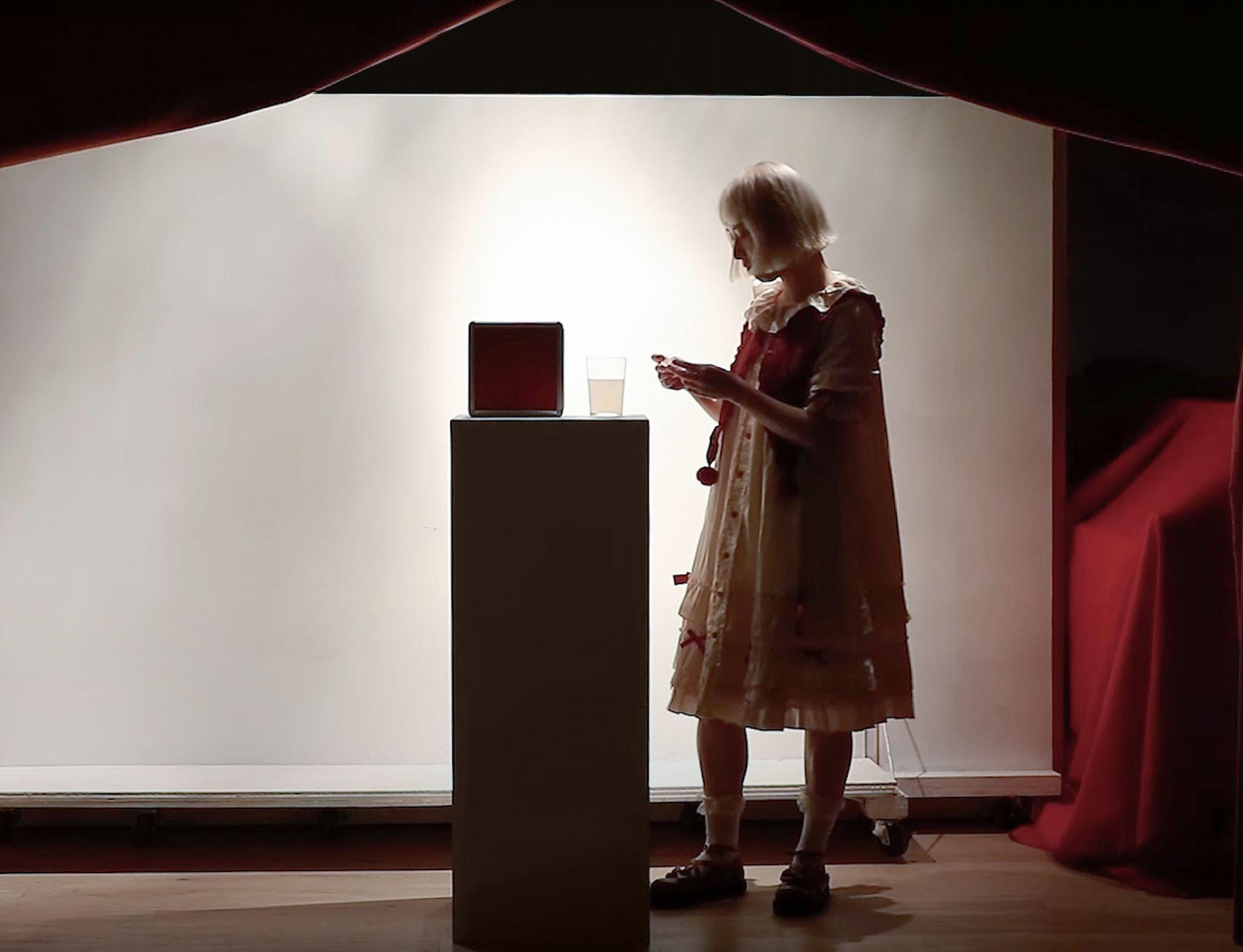Junyi Liu’s ‘Story Time’ Debuts at Ki Smith Gallery


When our cup runs over, it allows us to share our surplus with others. But what exactly are we sharing? Interdisciplinary performance artist Junyi Liu seeks to answer that question with unflinching pragmatism. All too often if we look inside ourselves the answer might just be: pain.
As traumatic headlines rip through the news cycle each day, in what seems an unceasing onslaught, each of us calculates our tolerance for consuming these events without them completely destabilizing our mental health. Though, the artist questions the ability for the strength–or immediacy–of that pain to be transferred across borders, across languages, across cultures; questioning if reporting–through its workflows–only serves to dilute those originating acts of violence.
Drawing from personal experiences as an immigrant artist, the notion of chance is deeply embroiled throughout the range of both live and filmed works shown at Ki Smith Gallery. Story Time–a program of six performances–is the artist’s inaugural engagement at the Lower East Side space, premiering on the heels of Performa biennial’s closing weekend. The program subtly unfurls–each piece a new chapter–revealing the omnipotence of indeterminacy as a chance operation, and its ramifications on the body and mind. Supporting emergent talent in the field, veteran writer and performer—Kurt McVey—brought together the venue and artist for the evening’s debut.
A restrained palette of black, white, and red weaves together earlier works with the immediate presence of those performed before the evening’s audience. Presence is paramount–holding mass, that of time itself, as it’s fixed between bodies–to generate the space for viewers to meet the artist’s conceptual frameworks halfway through active contemplation. Those bodies alluded to in the sleek opener Bridal Lament, also foreshadow the erasure of the female body as an enduring theme throughout the proceedings.
Silence pervades as the monochrome-clad artist rises from a kneeled stance: prayerlike, holding space in a reflective interlude. The centering motif in a horizon of suspended red veils, Liu continues the visual line–or lineage–of the faceless women, occasionally heard in the regional rise-and-fall of an ancient South Western Chinese folk tradition loosely termed “Crying Bride Songs.” A ceremonial outgrowth of arranged marriage, these misty croons pervade the ghostly ache of a young woman anxiously decoupling from her original family, uncertain of her future home. Metaphoric and deeply measured: each unnamed, unrecognized veil is snipped–enacting an ancient Greek Fate–its lifeline cut short, as so many before us are now forgotten.

Echoing undulations of an electric score invited light into the proceedings and propelled the artist down the stairs in layered lace. A babe in arms nestled amidst and amongst red protruding spikes, penetrating limbs and dress alike of the mothering protector. Yet each released from its originating vector is plucked as seething ammo with which to puncture and punish the hidden child. Love to the Core is an elegy of embodied generational trauma passed on unconsciously but released to accumulate as tiny drips in a pan until the artist jabs the last depth of her crimson needle into the pockmarked cocoon of a faceless babe.
A fierce bearer stands before the audience, audaciously yet compulsively swaying, piercing, swaying, plunging, swaying. She’s visibly plagued with a heaviness tinged with hints of duress; upturned brow, chin tilted to keep tears locked in, unable to fall. Ironically, bringing the swaddled bundle closest, and most peacefully showering it with tender caresses, once her process is complete, and the child’s full demise has ensued. Perhaps this frees the central figure from dissociation–bringing her closer and closer into fully present personhood in her own right–through the inculcation of this mother’s embodied lineage of accrued pain transfers unto the next generation.

The screech and slice of duct tape pulled and torn, interrupts the soundscape of tonal frequency bellowed by each female figure in the on-screen group populating the video work I Was Once of Us. In an unpatterned order, each figure is laid low—silenced—by a hoodied unidentifiable figure in black. Demon or dementaur the character silently rips through the gathering of young women, like a plague settling cloud-like amidst the negative space. Sapping the sonic energy of the space dry.
The odds of being silenced is a chance operation in itself, as each on-screen female performer awaits her fate on high alert. The intensity of one’s listening for the undiscoverable proximity of the slayer, unseen within their realm, creates a soundscape and a distinct emotional register for this piece. Who’s next, known only by the hoodie himself, becomes a multilayered metaphor for the audience to imbue with their own chosen referent. An infectious disease? Patriarchal erasure? Traumatic silencing as the impact of assault? Succumbing to the unavoidable specter of death itself?
Perhaps the signifier of this anonymous shadow is the indifference–seeping with a lack of control–towards the expendability of the female body in an all-consuming society. Where should the checks and balances within a social structure fall to ensure utterly complete exploitation of the citizenry doesn’t leave a trail of spent bodies in its wake?
In contradistinction to each other’s use of scale, use of language, and format of cinematic shot, these back-to-back screened video works–toggle from communal to private scale, non-verbal to representational narrative, and a single shot landscape to a compendium of cropped vlogs–bookending one another as complete inversions. Ranging from Covid moments to college parties, to reckonings with parents or familial structures, Story Time is a chaptered anthology of individuals’ vignettes of emotional abuse and sexual trauma. Each voice belongs to a different individual than the narrator viewed on-screen accompanying the account. As the work progresses it becomes more pronounced that the sitters hold bifurcated identities with the speakers, only the artist knows whose experience belongs to whom, since neither face nor voice is attached to the initial story. They are fully dislodged from their origin point. Yet the artist examines if they are still suffused with emotional resonance, or are only diluted as the audience experiences its last drops of energy, isolated from its empathy-endowing pain.
Twelve episodes in all, the building and arrangement of each story are deliberately curated into balance with the others, to flow, to find space for reflection, and for the audience to pause upon these systemic, yet deeply familiar personal issues. Expressed without an overwhelming or overtly triggering sentiment, the true measure of this video work’s artifice is crafting by its supportive creative.

From raw vulnerability to the flippant to the salacious, Secret Keeper is the uninhibited finale for the night.
“I’m scared, that when someone gets to know me, they will leave.”
“The secret is 1, 2, 3.”
“I fucked my boss.” GASPS ABOUND!
An exchange of energy writ large, the artist now becomes the previously on-screen narrator in 3-D, splitting each audience member from their own anonymously submitted ballot box secret. Liu expressively lays bare each confession, then dutifully consumes them all, washing each edible paper down with workmanlike fortitude.
A few soft, short, exasperated breaths are the only tell of the difficulty in holding down nearly thirty-six penned secrets of the audience’s energy, that they have not yet fully processed. Although the artist’s own body–offered as a vehicle of meaning, as the medium itself–will process out their potent energy first. Laying bare to the audience an urgency to follow suit in this confrontation with the unseen. Liu’s process of identifying and mediating generationally transmitted sorrow, instability, and grief–simultaneously personal, yet universal–necessitates the body as a medium through the act of performance. This first evening-length program by the artist utilized time as an active dimensional material, not in excess or in retribution, but as a resolute, yet palatable, structuring arc.
Still an early moment in the artist’s career, with ample room for additional development (which hopefully she will continue to nourish deeply), this body of early performance projects reaches through to enrich the viewer, and if successful, draw them back into inquisitive connection with their own body’s capacity for the emotional resonance necessary to motivate them towards processing their pain. Offering an alternative to our own mind-body’s predetermined intergenerational transfer of unprocessed trauma, aptly illustrated in Love to the Core as inextricably camouflaged within our cellular frameworks, the artist’s ‘story time’ creates the conditions to offer restorative repair through this jarring and heart-wrenching fall season.
Follow Junyi Liu on Instagram to catch her next performance.
You Might Also Like
Holler Rat, a Memoir as a Performance: Christen Clifford Interviews Anya Liftig
Interview: Christopher Kline, An Artistry Fueled by Lore & History
What's Your Reaction?
Carson Woś is a researcher, writer, and arts administrator. Her research interests include fiber art, global feminisms, and architectural sustainability, and she is a contributor to Cultbytes and Artspiel. Currently, the Development Officer for The Immigrant Artist Biennial and Partnerships Director at Seminal. Woś has held previous positions at Artnet, Hampton Court Palace, Metropolitan Museum of Art, MoMA PS1, and Creative Capital. Woś holds an MA in Decorative Arts, Design History, and Material Culture from Bard Graduate Center, and an MA (Hons) in Art History from University of St Andrews in Scotland.

